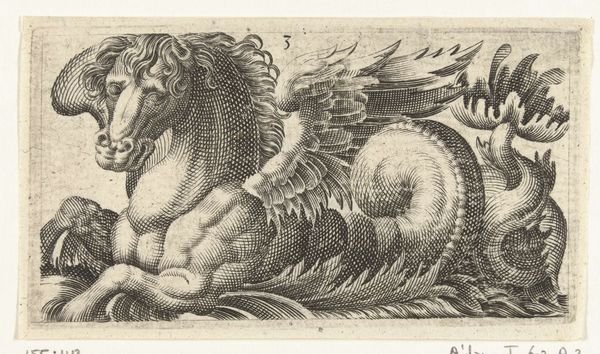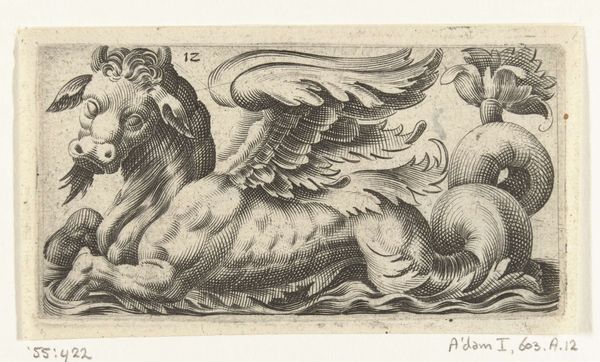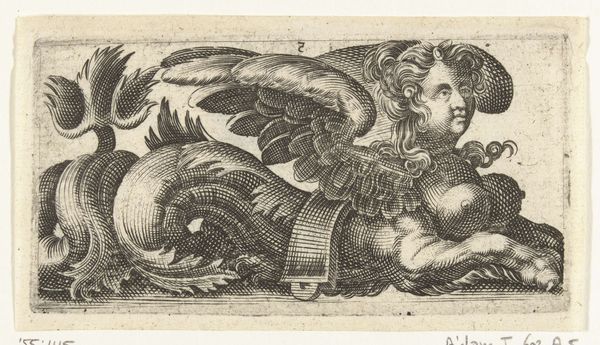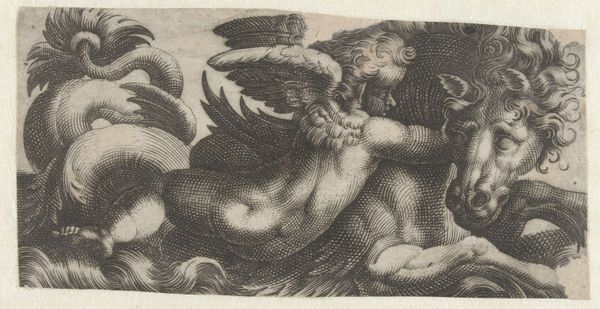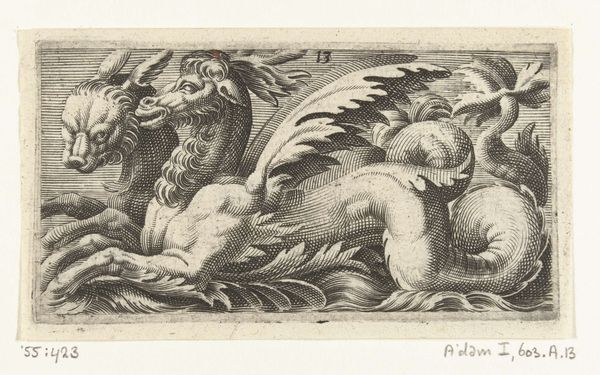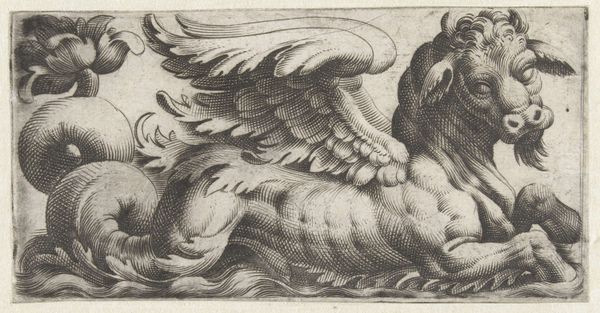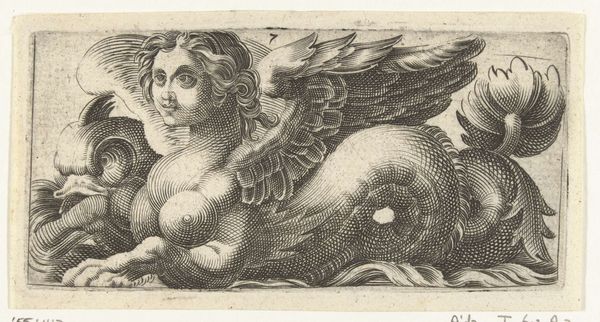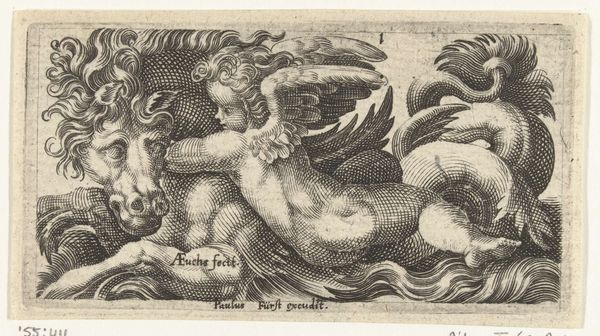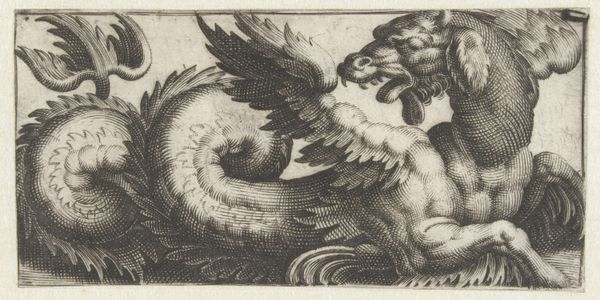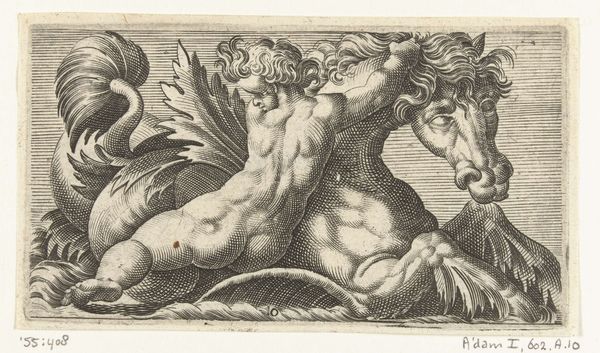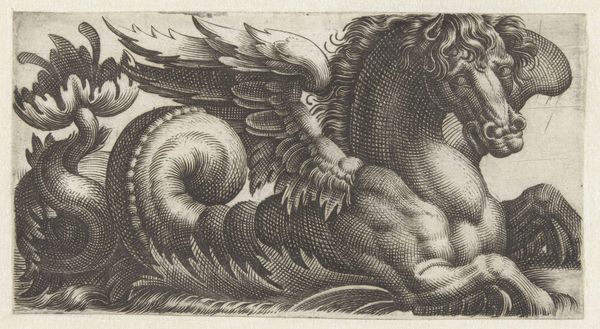
Gevleugeld zeepaard met aan zijn staart een knop van bladeren c. 1526 - 1606
0:00
0:00
adamfuchs
Rijksmuseum
#
pencil drawn
#
light pencil work
#
pen sketch
#
pencil sketch
#
old engraving style
#
pencil drawing
#
pen-ink sketch
#
pen work
#
pencil work
#
pencil art
Dimensions: height 56 mm, width 107 mm
Copyright: Rijks Museum: Open Domain
Editor: Here we have a drawing called "Gevleugeld zeepaard met aan zijn staart een knop van bladeren," or "Winged seahorse with a bud of leaves on its tail," dating from around 1526 to 1606 by Adam Fuchs. It's a pen sketch, very delicate. What strikes me is how this mythical creature seems both powerful and strangely vulnerable at the same time. What do you see in this piece? Curator: It's fascinating, isn't it? This seahorse speaks volumes about the anxieties and aspirations of the time. Consider the historical context: Europe grappling with exploration and the "discovery" of new worlds. Creatures like this became symbolic of that intersection—a blend of familiar and utterly unknown. Notice how the winged seahorse itself embodies hybridity, a fusion of land, sea, and sky. It echoes a moment of profound cultural exchange, but also reflects an exertion of power. Who gets to name, to classify, to imagine these creatures, and what does that say about their control over the narrative? Editor: So, it’s not just a whimsical drawing but a reflection of cultural power dynamics? Curator: Precisely. These early depictions shaped perceptions, embedding a Eurocentric view into the understanding of nature. It makes me question the ethics of representation. Is the artist celebrating nature's wonder, or subtly reinforcing a sense of European dominance? What are your thoughts? Does it prompt you to look at other historical representations differently? Editor: It does! I guess I hadn't considered how much these images might have shaped perspectives back then, and even still today. It makes me think about whose vision of the world gets amplified. Curator: Exactly! And it's that kind of critical awareness that helps us unlock the deeper meanings embedded in these artworks and how it all resonates today. It’s not just about admiring its technique but understanding its role in a much bigger, more complex conversation about power and knowledge. Editor: Thanks, I'll definitely remember to consider that context from now on.
Comments
No comments
Be the first to comment and join the conversation on the ultimate creative platform.
